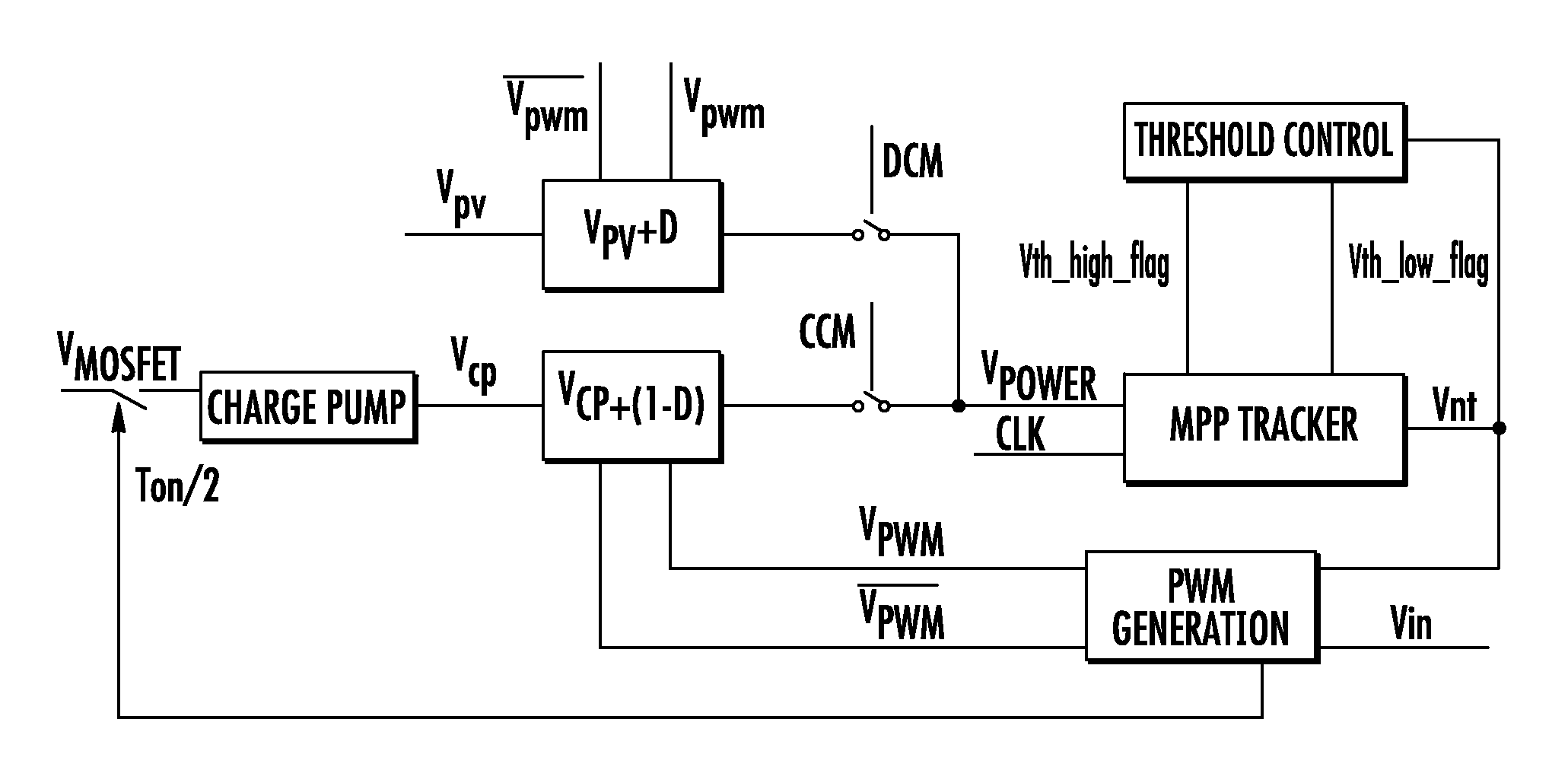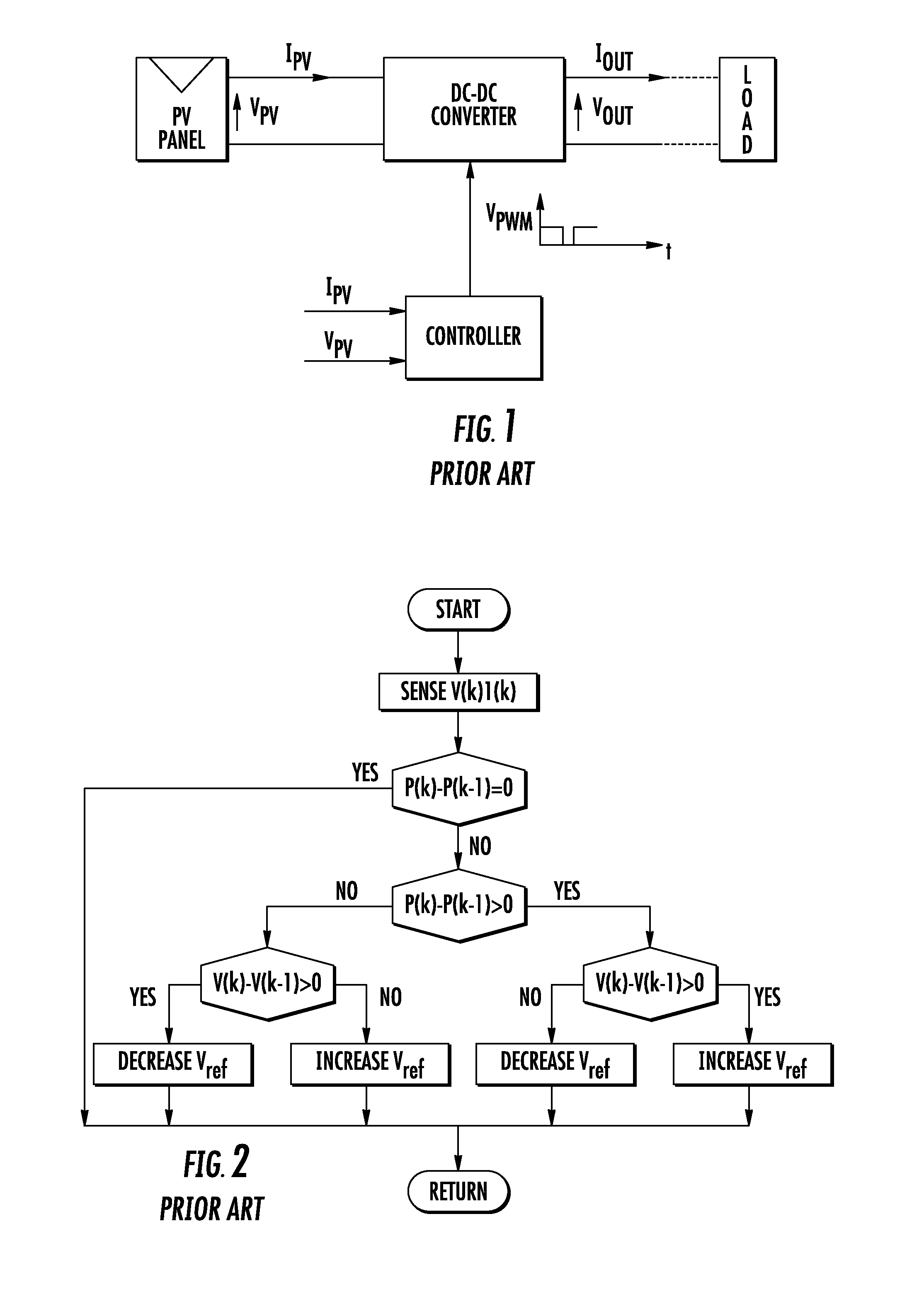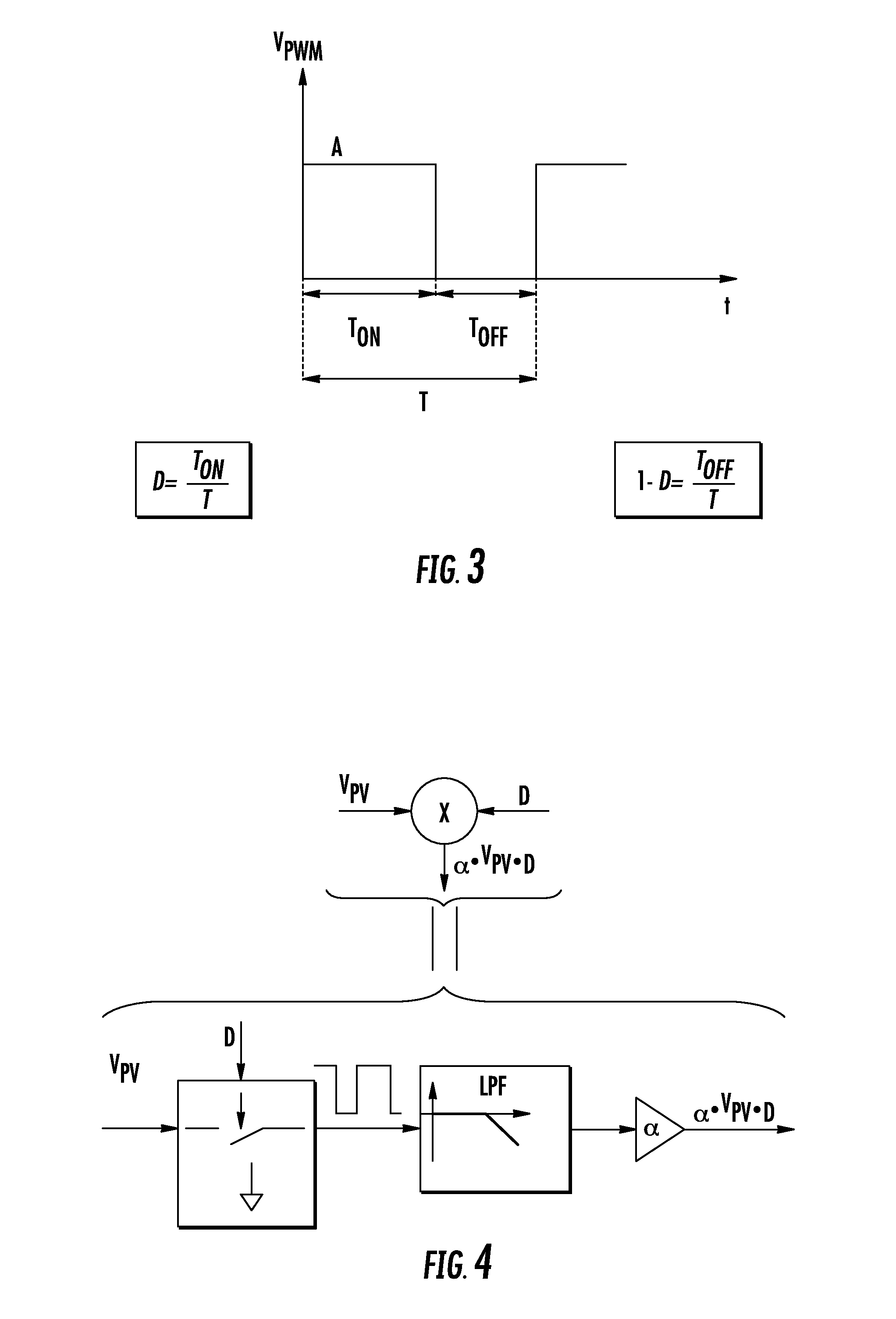Analog MPPT circuit for photovoltaic power plant
a photovoltaic power plant and analog technology, applied in the direction of constant-current supply dc circuit, constant-current supply ac circuit, electric variable regulation, etc., can solve the problems of low energy conversion efficiency, low cost of photovoltaic power plants, and few methods of tracking mpp
- Summary
- Abstract
- Description
- Claims
- Application Information
AI Technical Summary
Benefits of technology
Problems solved by technology
Method used
Image
Examples
Embodiment Construction
[0026]The duty cycle D of the power switch of a DC-DC converter is controlled by a Pulse Width Modulated (PWM) driving signal, VPWM. The ratio between the ON time and the whole period of the waveform is D, as shown in FIG. 3.
[0027]Monitoring of Power Extracted from the PV Panel
[0028]If the amplitude of the PWM driving signal is A and if it is applied to a low-pass filter, the resulting signal may be a constant voltage proportional to the product A*D as far as ripple can be neglected. Moreover the PWM signal may be used to switch the voltage between VPV and ground at the input of the same low-pass filter, such that the resulting output signal is a constant voltage proportional to VPV*D with negligible ripple. The product signal represents the power currently yielded from the PV panel or panels when the converter is functioning in discontinuous conduction mode (DCM).
[0029]A functional block diagram of hardware for performing such a multiplication is depicted in FIG. 4. FIG. 5 is an ex...
PUM
 Login to View More
Login to View More Abstract
Description
Claims
Application Information
 Login to View More
Login to View More - R&D
- Intellectual Property
- Life Sciences
- Materials
- Tech Scout
- Unparalleled Data Quality
- Higher Quality Content
- 60% Fewer Hallucinations
Browse by: Latest US Patents, China's latest patents, Technical Efficacy Thesaurus, Application Domain, Technology Topic, Popular Technical Reports.
© 2025 PatSnap. All rights reserved.Legal|Privacy policy|Modern Slavery Act Transparency Statement|Sitemap|About US| Contact US: help@patsnap.com



